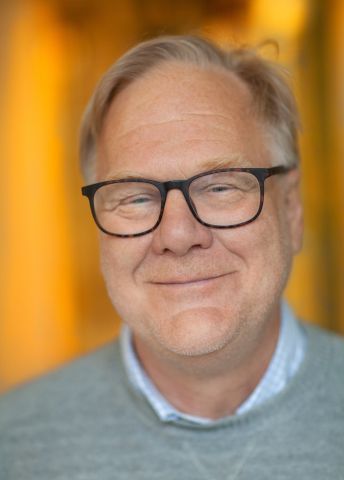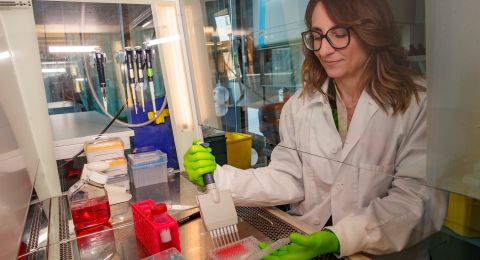The world is more poorly equipped to cope with bacterial infectious diseases today than it was twenty years ago. The same long-established drugs are still being used, while resistance to antibiotics is on the increase. But new diagnostic methods may offer some hope, according to Professor Dan I. Andersson.
Dan I. Andersson
Professor of Medical Bacteriology
Wallenberg Scholar
Institution:
Uppsala University
Research field:
Studies of how resistance arises and various resistance mechanisms. New principles for antibiotic design, dosage and diagnostics with a view to slowing resistance and providing more effective antibiotics.
The problems posed by antibiotic resistance have grown in recent years. In the EU alone some 25,000 people die each year due to infectious diseases no longer susceptible to treatment with antibiotics or other drugs. The annual global death toll is about 700,000 – a figure set to rise dramatically in the coming decades.
Andersson is Professor of Medical Bacteriology at Uppsala University and Director of Uppsala Antibiotic Center. He has specialized in antibiotic resistance for the past twenty years. His research delves into the problems right down to genetic level.
As a Wallenberg Scholar, his aim is to identify the less explored relationships between known resistance genes and other genes in bacterial DNA, and how they interact with their surrounding environment. The goals are to develop accurate diagnostic tools, more effective antibiotics, and to understand the dynamics of resistance development.
“Personally, I would probably call myself an evolutionary biologist. There is an intimate relationship between genetics and evolutionary biology, and we are focusing on the evolutionary dynamics of bacteria,” Andersson says.
Complex relationships
It turns out that bacteria have an extraordinary capacity for genetic change. They can take genes from other organisms, but can also delete genes. Genes sometimes also amplify so the bacterium acquires several copies of the same gene.
These genetic changes may also result in resistance to antibiotics, but can also sometimes impair the bacterium’s ability to cause disease or slow the rate of transmission.
“We see that the problem of resistance involves many factors.”
In the lab, but also in animals, humans and nature, Andersson and his research team are studying how resistance arises, how resistance mechanisms reduce bacterial growth and survival, and how bacteria restore their survival capacity.
Promising rapid diagnosis
The scope of the research is broadening the whole time. Evolutionary biologists are relatively new to the field; it is hoped they will contribute new fundamental insights.
But there are also other lines of research, of a more applied nature, where the aim is to develop rapid diagnostics for antibiotic resistance.
“Diagnostics is the field where I am most hopeful, and where rapid developments are currently taking place.”
At present “empirical therapy” is the most common approach, where a doctor prescribes a drug based on the resistance situation among a large number of people, such as the entire population of a country. But it is not certain that the chosen drug will work on a given bacterium – it might be resistant. The therapy becomes less effective, and often leads to overuse of antibiotics that attack a broader spectrum and numerous types of bacteria.
“Here we see great benefits in having a faster and more accurate diagnostic method that is cheap and simple enough. It will reduce patient suffering and use of antibiotics.”
The new method is based on highly sensitive bacteria-specific monitoring of bacterial growth in the absence and presence of antibiotics of various kinds.
The vision is for it to be possible for patients with a urinary tract or respiratory infection, for example, to be tested right at the primary health care center. Doctors should be able to receive accurate details about the resistance of the bacteria involved so they can choose appropriate antibiotic treatment at an early stage.
“Our research has resulted in the formation of a company that will now be commercializing one of the tests,” Andersson says.
“It’s incredibly gratifying to receive a grant that both acknowledges the quality of our research, and gives us extraordinary freedom. There is much talk of curiosity-driven research, and we really do have the opportunity to do just that.”
Akin to climate
Awareness of antibiotic resistance has existed for a long time. As far back as 1945 Alexander Fleming, who discovered penicillin, warned of a future in which antibiotics no longer helped. But the decline in effectiveness is a slow one, and is therefore not being taken seriously enough.
“Thirty years ago, we still had plenty of effective antibiotics, and resistance was not considered to be a major problem. But resistance is growing slowly the whole time. There are actually many similarities between antibiotic resistance and climate change,” Andersson reflects.
Uppsala has become a hub for research and education aimed at finding new solutions to the global challenge of antibiotic resistance. Uppsala Antibiotic Center was founded in 2015, and is based on the work of PhD students in all scientific disciplines. Unexpected perspectives include linguistic studies into how doctors and patients interact when antibiotics are prescribed, and how antibiotic use works in a hospital in the developing world.
“We have an incredibly broad range of projects, and have managed to unite researchers around collaborative points they were not even aware existed.”
For his own part, Andersson hopes that the next few years will yield new fundamental answers about the characteristics of resistance genes, and also that the new rapid diagnostic tests become available to patients.
“The best thing is that we don’t need to choose between basic research and applications – I have the privilege of working on multiple projects at the same time.”
Text Nils Johan Tjärnlund
Translation Maxwell Arding
Photo Magnus Bergström






